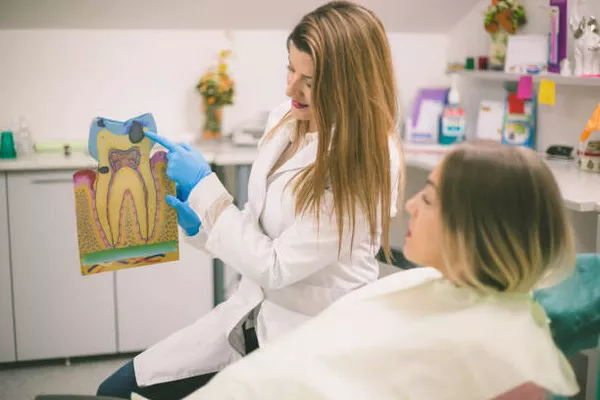In this age of social media and image-sharing platforms, achieving that perfect smile is on the forefront of many people’s minds. One way to gauge your dental health and track your journey towards a brighter smile is through filters. But what do these filters really reveal about your teeth, and how can you use them to your advantage? In this article, we’ll explore various filters and their roles in helping you assess the color of your teeth, provide dental health advice, and offer tips on teeth whitening.
1. Teeth Yellowing Filters: The Basics
Filter technology has come a long way, and today, there are various filters on social media platforms that claim to show the true color of your teeth. These filters are designed to emphasize the whiteness of your teeth, and some may even detect subtle discolorations that are not visible to the naked eye.
Instagram Teeth Filters: Instagram, one of the most popular image-sharing platforms, offers a range of filters that can make your teeth appear whiter and brighter. Filters like “Teeth Whitening” or “Smile Enhancer” can give you a sneak peek into how your teeth could look with a little extra dazzle.
Dental Health Indicators: While these filters primarily focus on aesthetics, they can indirectly offer insights into your dental health. Filters that reveal yellowing or stains can signal potential issues with your teeth, prompting you to take action.
2. What the Filters Reveal: Interpreting the Signs
When using teeth-yellowing filters, pay attention to the following indicators:
Shade Variation: Filters often show a spectrum of shades, from pearly white to off-white and yellow. If your teeth appear closer to the yellow end, it might be time to consider teeth whitening solutions.
Stains and Spots: Filters may highlight specific stains or spots on your teeth. These could be signs of enamel erosion or dental plaque buildup, necessitating a visit to your dentist.
Consistency: Consistency in tooth color is essential. Filters that display uneven tooth coloration may reveal the presence of dental issues that require professional attention.
Environmental Factors: Filters can sometimes pick up discolorations caused by external factors like smoking, coffee, or tea. These visual cues can serve as a reminder to limit consumption or adopt better oral hygiene practices.
3. Dental Health and Filters: The Nexus
Filters can be a double-edged sword. While they may shed light on dental issues, they are not a substitute for professional diagnosis and advice. Always remember that your dentist is the ultimate authority on your oral health.
Routine Dental Check-ups: Filters are a valuable reminder to schedule regular dental check-ups. A dentist can accurately assess the condition of your teeth and recommend appropriate treatments.
Whitening Solutions: If filters consistently reveal yellowing, teeth whitening solutions can be an effective remedy. Consult with your dentist to explore options like in-office whitening, at-home kits, or natural remedies.
4. Teeth Whitening Tips: Maintaining a Radiant Smile
Achieving and maintaining a bright smile is a journey, and filters can motivate you to enhance your dental health. Here are some tips to keep your teeth dazzling:
Brush and Floss Regularly: A good oral hygiene routine is the foundation of white teeth. Brush at least twice a day, floss daily, and use a fluoride toothpaste.
Watch Your Diet: Minimize the consumption of teeth-staining substances like coffee, tea, red wine, and tobacco. These can lead to yellowing and stains over time.
Professional Cleaning: Schedule professional dental cleanings every six months. This will remove surface stains and prevent plaque buildup.
Teeth Whitening Products: If your teeth still need a boost, consider teeth whitening products under the guidance of your dentist. They can ensure safe and effective use.
Natural Remedies: Some natural remedies, like oil pulling with coconut oil or brushing with baking soda, can help whiten teeth. However, consult your dentist before trying them.
5. The Science Behind Teeth Whitening
Understanding the science behind teeth whitening can help you make informed choices when using filters and selecting whitening products.
Teeth whitening works by using active ingredients like hydrogen peroxide or carbamide peroxide to break down stains and lighten the tooth’s color.
In-office whitening treatments are quicker and more potent, while at-home kits are milder but offer convenience.
Results can vary based on the severity of staining, genetics, and lifestyle factors.
6. Final Thoughts
In conclusion, teeth-yellowing filters on social media platforms can be both fun and informative. They offer a glimpse into your dental health and provide motivation to maintain a radiant smile. However, remember that while filters can be a starting point, consulting a dentist is crucial for professional advice and guidance on teeth whitening. Follow a robust dental care routine, watch your diet, and consider teeth whitening options to achieve the bright, confident smile you desire.
Related Links:
How to improve bad breath through internal adjustment?
Will yellowed teeth cause odor?
How to Remove Yellow Stains from Teeth: A Comprehensive Guide
































